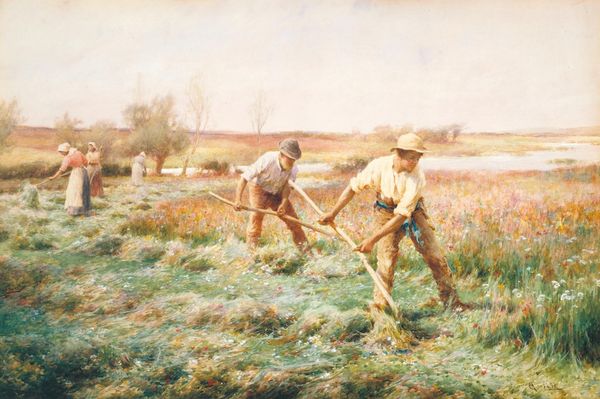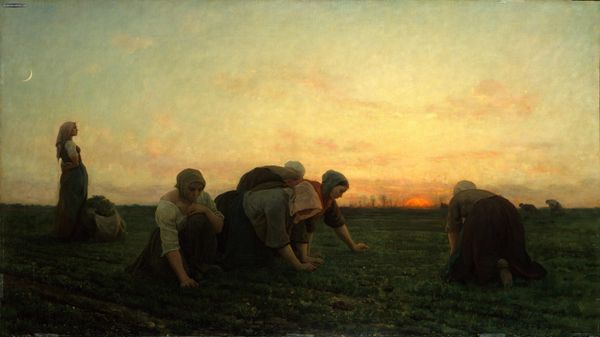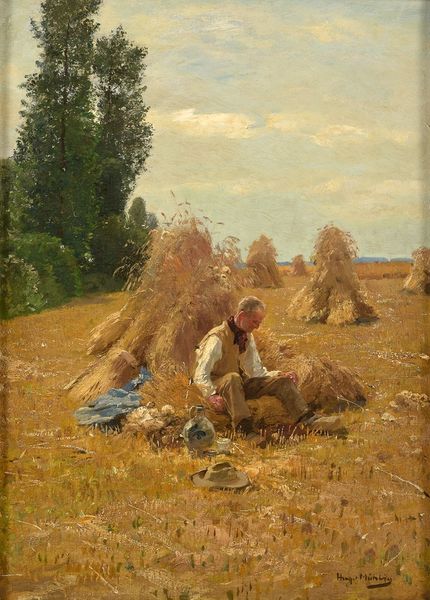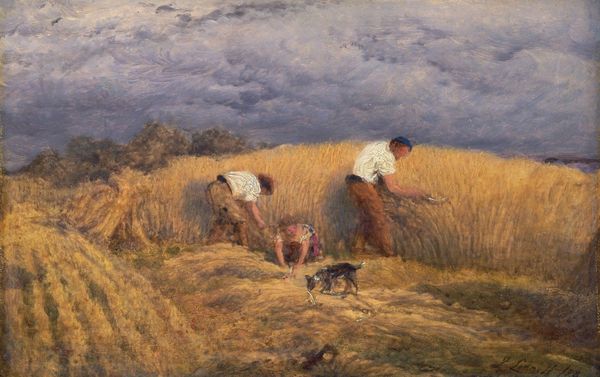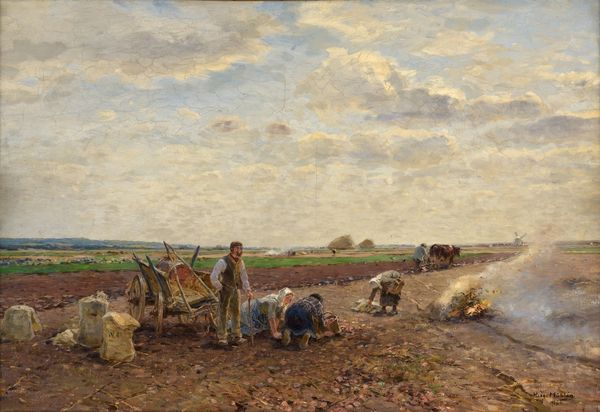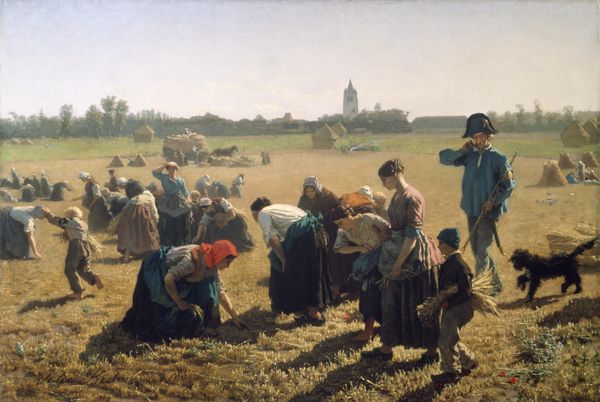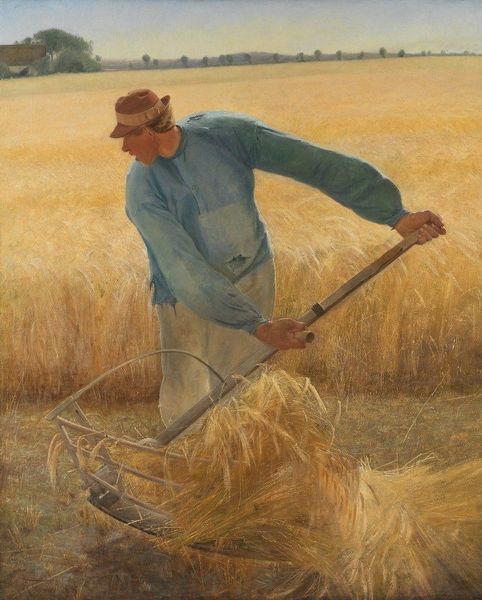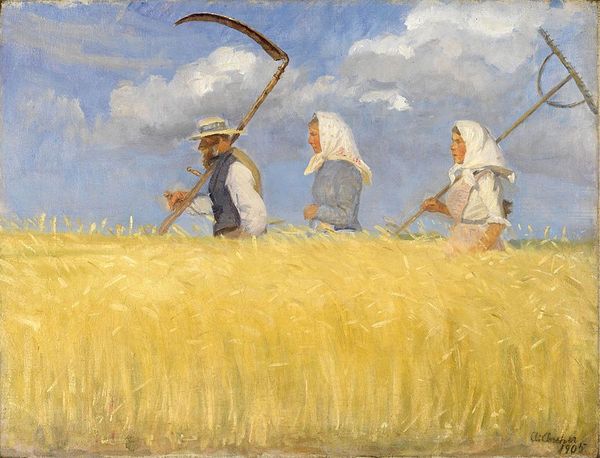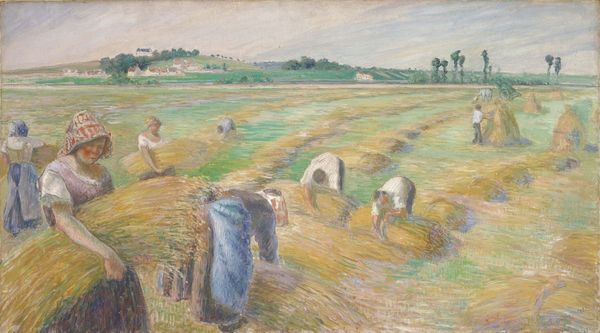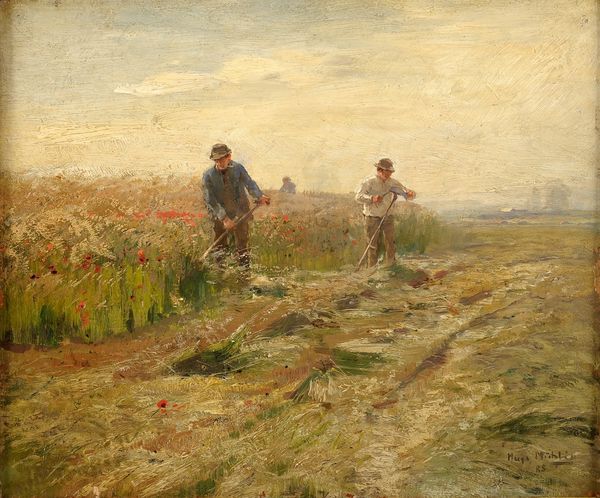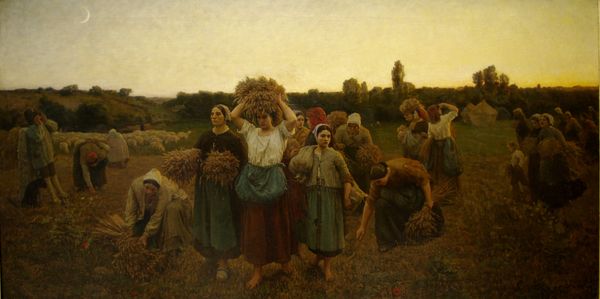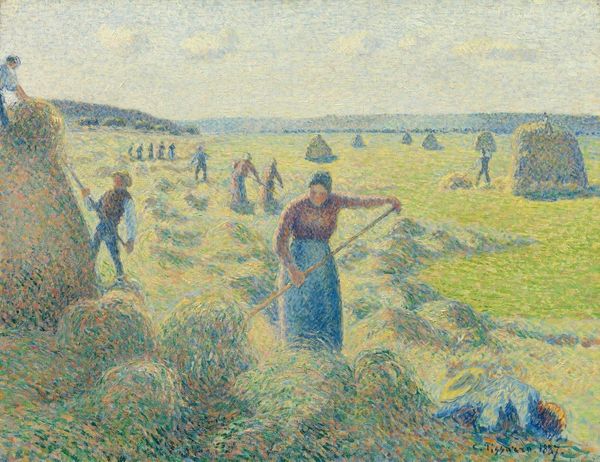
plein-air, oil-paint, impasto
#
impressionism
#
plein-air
#
oil-paint
#
landscape
#
oil painting
#
impasto
#
genre-painting
#
realism
Copyright: Public domain
Curator: The artwork we're looking at is titled "Harvest Field" by Hugo Mühlig. What immediately strikes you about this piece? Editor: It's a rather pastoral scene, isn't it? The golden hues evoke a sense of warmth, but also, the density of the impasto suggests the sheer labor involved in reaping a harvest. Curator: Indeed. Mühlig often focused on scenes of everyday life, particularly rural labor. Considering the means of its production, the impasto technique you mentioned indicates the artist’s engagement with the materiality of paint. This becomes a testament to the physical act of creating the artwork, mirroring the labor represented within it. Editor: I am particularly struck by the positioning of the workers in relation to the land and how that positioning affects the visibility—or, rather, the relative invisibility—of their struggles. The historical context surely points to broader issues around labor exploitation, wealth disparity and social inequalities. The bent backs and obscured faces tell of a workforce dehumanized through repetitive toils, not given visibility nor agency within a burgeoning industrialized economy. Curator: You're touching upon critical aspects. This work could be examined alongside concurrent socio-economic changes in agricultural practices and the commodification of labor during the period. It certainly captures an important transition from a subsistence model into more of an economic, global, capitalist approach to agriculture and labor in general. Editor: The field is, of course, what gives the artwork its name and what sustains communities in various material ways; but I also wonder what happens to these subjects when they leave the fields. The politics of harvest transcend this immediate landscape painting—where, ultimately, do they lead and connect? Curator: These are valid concerns and this artwork certainly becomes an archive in terms of materializing a critical view of working rural spaces and offering a window into understanding them beyond mere surface-level depiction. Editor: Looking at it from this lens is important precisely because these subjects exist within larger networks of power and resources—all of which influence these individuals in ways not so visible if the artwork is regarded simply for its painterly surface or subject. Curator: That's right. By exploring this piece from materialist and activist perspectives, we’ve touched upon not only the artistic process but also the larger questions of class and labour. Editor: Hopefully these viewpoints spark conversation beyond conventional readings of landscape art.
Comments
No comments
Be the first to comment and join the conversation on the ultimate creative platform.


